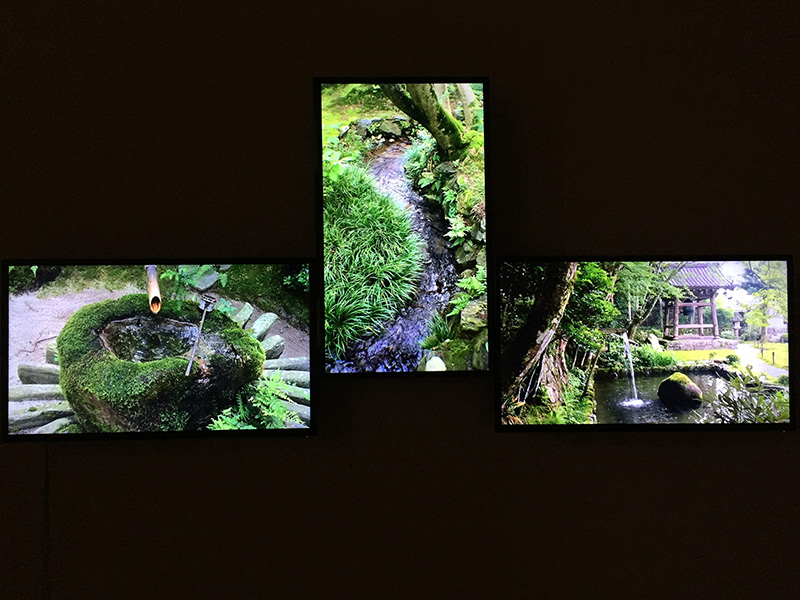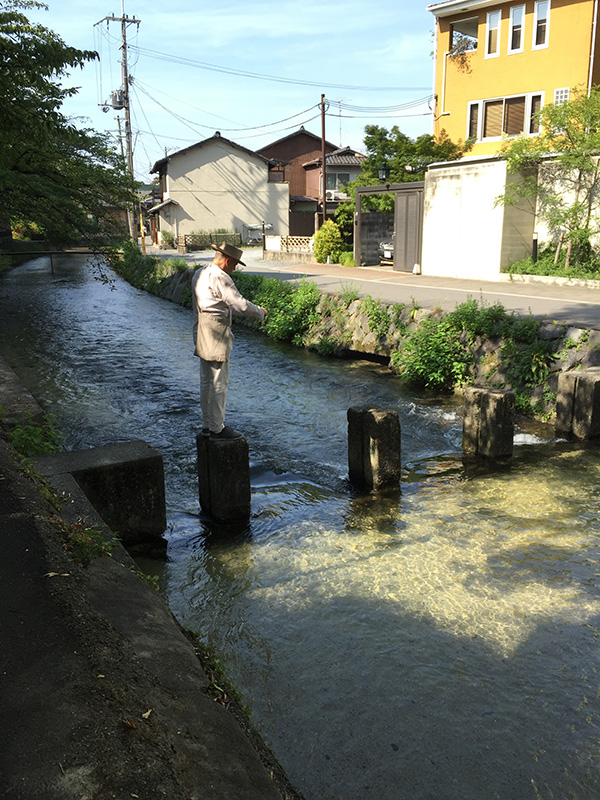Gary Warner
Lives and works in Sydney

work in exhibition:
WaterWalkKyoto 2015-16
3-channel 1080p HD video, customised Raspberry Pi computers + software, 162 mins
catalogue text:
jakko-in shokoku-ji tofuku-ji byodo-in chisaku-in higashi hongwan-ji shoren-in mimuroto-ji daitoku-ji
chion-in rakuhokurenge-ji eikan-do zenrin-ji tenryu-ji hosen-in shorin-in sanzen-in honen-in nanzen-ji
suikinkutsu suijin suitengu yasaka-jinja shimogama-jinja sudo-jinja heian-jingu uji-jinja
kamogawa setagawa shirakawa arashiyama kyoto ohara uji
I am an artist based in Sydney, and curator of the Fieldwork exhibition. My individual work in this group show is WaterWalkKyoto, an audio-visual exploration of water in the sonic ecologies of everyday life in Kyoto, Japan.
An inland city on the island of Honshu, Kyoto is situated in a natural basin embraced by low mountain ranges, with large catchment rivers running through it, and built on top of a vast underground aquifer. While visiting on two occasions in 2014-15, I became fascinated with the city’s prevalence of water energies and systems of flow control – archaic, modern, spiritual, utilitarian, natural, artificial – and the diverse sounds of water’s presence in the landscape.
Using my iPhone 6, I recorded 200+ handheld one-minute observations of water in the public spaces of Kyoto’s streets, temples, laneways, markets, shrines, forests and farmland. This touristic collection of audio-visual observations is presented as a triptych of HD video screens, an abstract evocation of the sitting posture of zazen. The videography is intentionally minimal with no camera moves, and scenes simply cut from one to the next.
There are 54 different videos shown on each screen – 162 minutes in total. The videos play in random sequences from custom-designed media players developed in collaboration with Jon McCormack. All 54 videos on each player display once before a new random sequence begins, so combinations of sound and image across the three screens vary constantly.
WaterWalkKyoto is an intentionally experimental and contemplative work, employing a compositional strategy with direct allegiance to the work, ideas and life of John Cage who spent formative time in Kyoto in the early 1960’s.
In 1959, Cage composed Water Walk ‘for solo television performance involving a large number of properties and a special single-track tape…’. He first performed the new composition on local TV in Milan, Italy but the work is best known today from the online archival video of a subsequent 1960 performance on the American TV show “I’ve Got a Secret”. During the live televised event, the theatre audience is in hysterics of disbelief as the tall besuited Cage happily wanders an elaborate assembly of devices and objects spread across the stage, quickly and deftly effecting a radically defiant cascade of acoustic eruptions.
Gary Warner
Sydney 2016

Gary Warner filming Shirakawa canal, Higashiyama, Kyoto 2015 photo: Joanna Greenwood